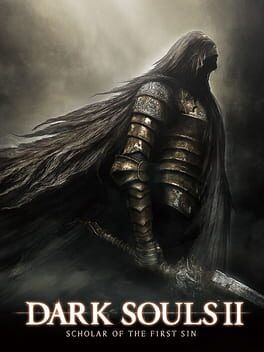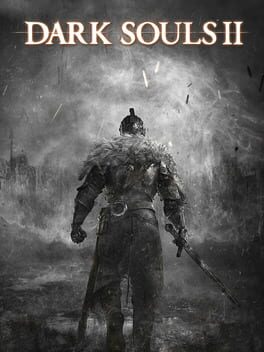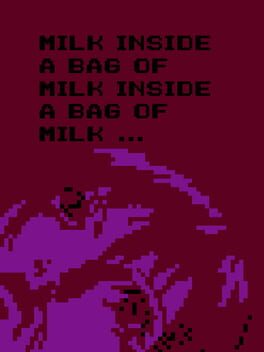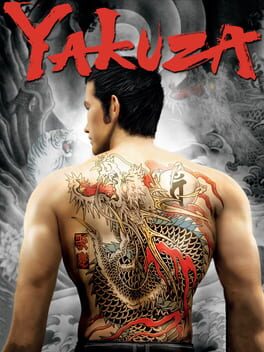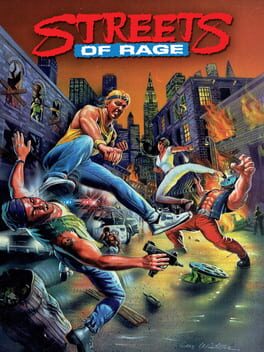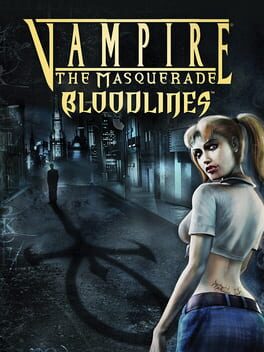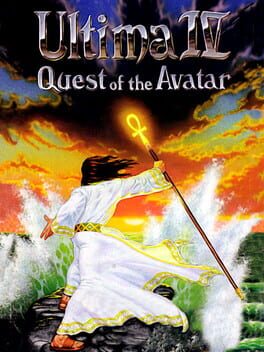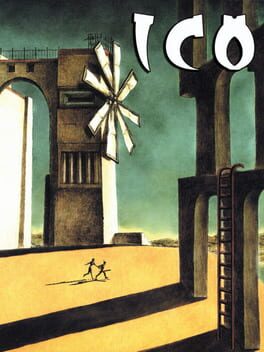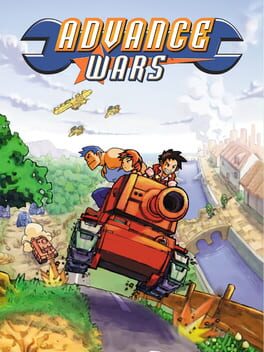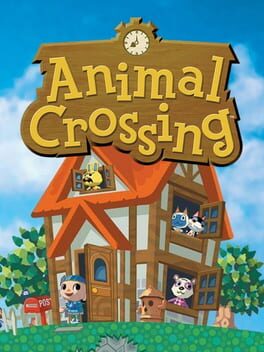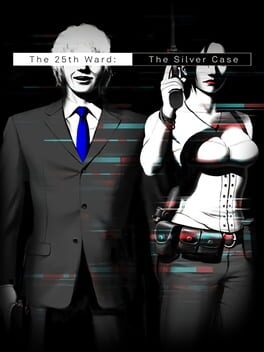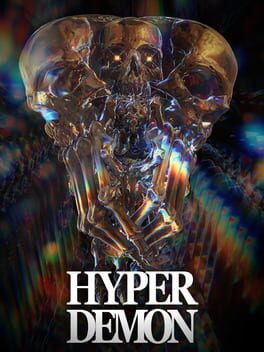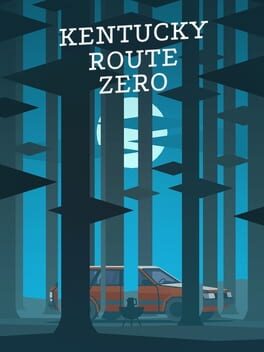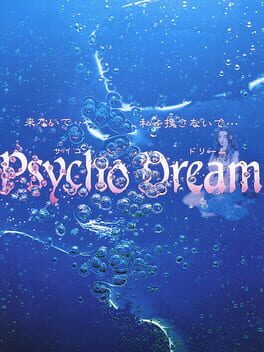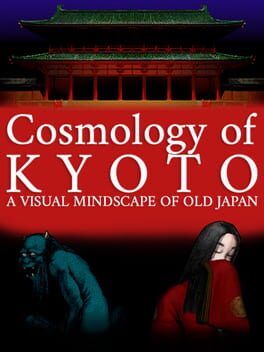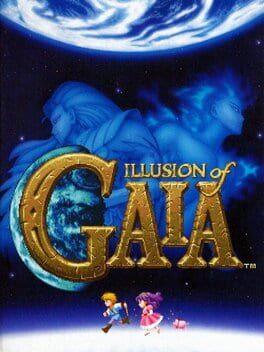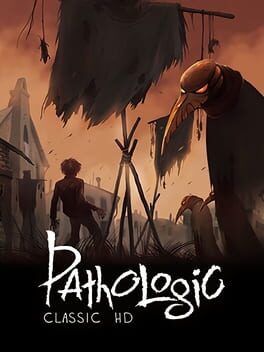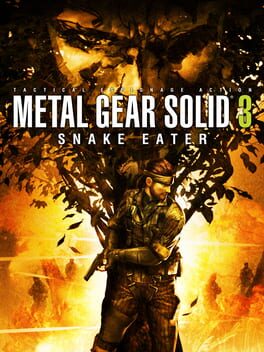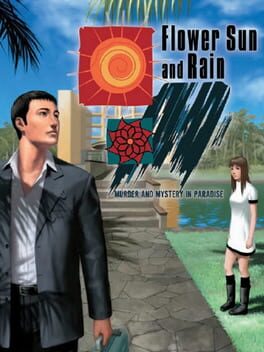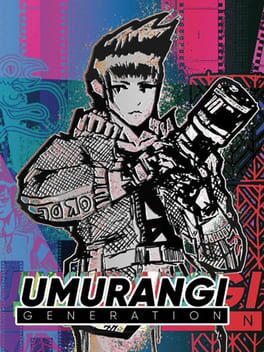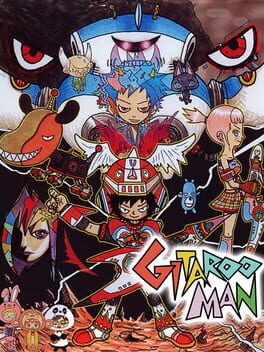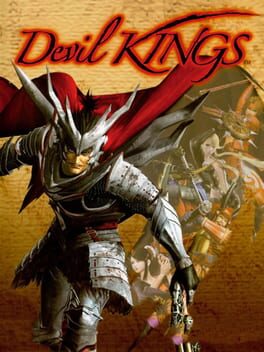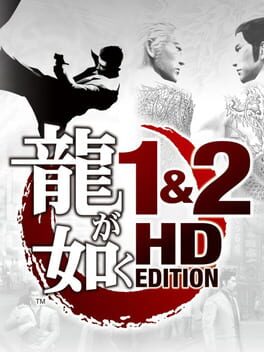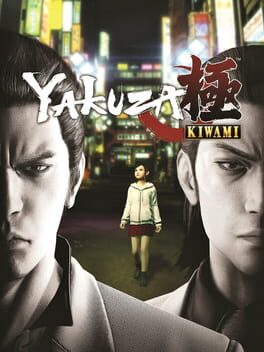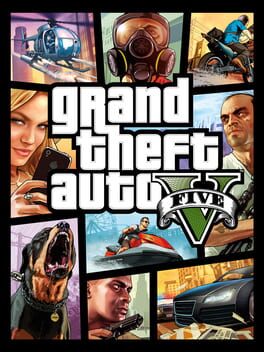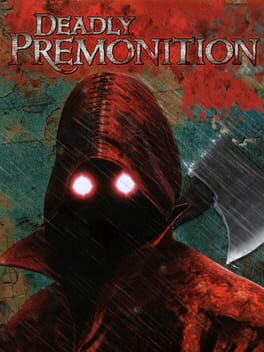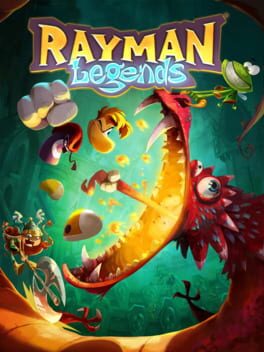25 reviews liked by Faure
Demon's Souls
2009
Platted on PS3 back in 2010.
While I like Dark Souls 1 more, this game has so many odd systems - World Tendency is truly wild - and the willingness to make every world's final boss a "puzzle boss" is bold. The world isn't very well-connected so it feels more like Mega Man as compared to Dark Souls' Metroid. And, of course, obtuse RPG mechanics including carry weights and absurd upgrade costs. I'm in love.
To get a plat I had to farm one specific enemy that only shows in one specific area at maximum black world tendency (requiring me to go offline and suicide like 50 times to tank my tendency) for hours. No wonder you never see people with maxed out Sharp modifiers lol. I love this shit.
Great game. Deranged.
While I like Dark Souls 1 more, this game has so many odd systems - World Tendency is truly wild - and the willingness to make every world's final boss a "puzzle boss" is bold. The world isn't very well-connected so it feels more like Mega Man as compared to Dark Souls' Metroid. And, of course, obtuse RPG mechanics including carry weights and absurd upgrade costs. I'm in love.
To get a plat I had to farm one specific enemy that only shows in one specific area at maximum black world tendency (requiring me to go offline and suicide like 50 times to tank my tendency) for hours. No wonder you never see people with maxed out Sharp modifiers lol. I love this shit.
Great game. Deranged.
There was a brief period where I was ready to jump on the 'Dark Souls 2 is underrated' train but then it just continued to hit me with underwhelming boss after underwhelming boss. I understand some fans prefer when the series leans harder into the RPG side of 'Action-RPG' but I'm really just here for the action and while some fights/areas delivered on this fairly well, a majority of them can be brute forced far too easily simply by having enough levels under your belt.
On a more positive note, the atmosphere here is unique and interesting, there's a pretty diverse range of locations (especially when including the DLC), and the NPCs are some of the most memorable in the series. I also actually enjoyed a majority of the additional enemies that were thrown into SotFS to make things a little more difficult; I don't want to imagine how bland some of these areas would've been without them.
At the end of the day, a souls game is a souls game and I had a good enough time working my way through Dark Souls 2 but this is easily the least impressed I've been with any entry in the series. (Insert joke about how DS2 is just an Elden Ring prototype here)
On a more positive note, the atmosphere here is unique and interesting, there's a pretty diverse range of locations (especially when including the DLC), and the NPCs are some of the most memorable in the series. I also actually enjoyed a majority of the additional enemies that were thrown into SotFS to make things a little more difficult; I don't want to imagine how bland some of these areas would've been without them.
At the end of the day, a souls game is a souls game and I had a good enough time working my way through Dark Souls 2 but this is easily the least impressed I've been with any entry in the series. (Insert joke about how DS2 is just an Elden Ring prototype here)
Dark Souls II
2014
nothing embodies this experience better than the 1-2 punch of the loopy arthouse perfume commercial intro followed almost directly by the mcdonalds ass "595839122 deaths served worldwide" advert in majula
on one hand we got a game with the foresight of a haruspex that envisions the ever-escalating arms race the series would find itself in and tries to preempt it with radical mechanical changes, and on the other we got a game that thinks Rat With a Mohawk is a really sick idea for a boss
this thing is the living end; the result of a wild disregard for anything fans consider sacred and a critical eye that found dark souls' core pillars wanting. given the chance to do a remix/remaster they chose to ignore all feedback, double down on all the bullshit, and name it SCHOLAR OF THE FIRST SIN like it's a terrence malick movie. the haters never had a prayer against this kind of power
oscillates between achingly beautiful and sandy petersen's work on doom II. presents characters as haunting as vendrick and lucatiel then goes and reskins dark souls' most emotionally resonant encounter as ripper roo. both modern fromsoft's most melancholic, human game, and the only one where you're forced to play as an absolute mutant
I'm at the point where I'm glad the lighting got downgraded before it came out. it should be fucked, it needs to feel sickly and eroded and wrong. iron keep has to be something you can't understand, and the transition from shaded woods to drangleic castle has to be as disorienting as possible. every time you question the earthen peak elevator I only grow stronger and more insufferable
this is the response to a call no one made. it's gotchas behind gotchas behind gotchas, noble failures, bandai namco PTDE marketing quotes, and fromsoft's most indulgently experimental design since demon's souls. it's the bondage gimp door, the gender swap coffin, npc invaders modeled after the most dickhead player behaviour possible, and the cumulative psychic damage of the frigid outskirts
it's fighting the rotten four times to skip half the game, becoming drangleic's next top model, and having NAMELESS CHAD kill you while you idle in iron keep. it's backstep iframes, powerstancing demon hammers, unbelievably good pvp, and yui tanimura's masterful turn as director of the dlc trilogy
talk all the shit you want:
a lie will remain a lie
on one hand we got a game with the foresight of a haruspex that envisions the ever-escalating arms race the series would find itself in and tries to preempt it with radical mechanical changes, and on the other we got a game that thinks Rat With a Mohawk is a really sick idea for a boss
this thing is the living end; the result of a wild disregard for anything fans consider sacred and a critical eye that found dark souls' core pillars wanting. given the chance to do a remix/remaster they chose to ignore all feedback, double down on all the bullshit, and name it SCHOLAR OF THE FIRST SIN like it's a terrence malick movie. the haters never had a prayer against this kind of power
oscillates between achingly beautiful and sandy petersen's work on doom II. presents characters as haunting as vendrick and lucatiel then goes and reskins dark souls' most emotionally resonant encounter as ripper roo. both modern fromsoft's most melancholic, human game, and the only one where you're forced to play as an absolute mutant
I'm at the point where I'm glad the lighting got downgraded before it came out. it should be fucked, it needs to feel sickly and eroded and wrong. iron keep has to be something you can't understand, and the transition from shaded woods to drangleic castle has to be as disorienting as possible. every time you question the earthen peak elevator I only grow stronger and more insufferable
this is the response to a call no one made. it's gotchas behind gotchas behind gotchas, noble failures, bandai namco PTDE marketing quotes, and fromsoft's most indulgently experimental design since demon's souls. it's the bondage gimp door, the gender swap coffin, npc invaders modeled after the most dickhead player behaviour possible, and the cumulative psychic damage of the frigid outskirts
it's fighting the rotten four times to skip half the game, becoming drangleic's next top model, and having NAMELESS CHAD kill you while you idle in iron keep. it's backstep iframes, powerstancing demon hammers, unbelievably good pvp, and yui tanimura's masterful turn as director of the dlc trilogy
talk all the shit you want:
a lie will remain a lie
Yakuza
2005
Yakuza
2005
Every time I think about Yakuza, I see a cinematic angle of Kiryu strutting down the dark, neon-lit streets of Kamurocho in the pouring rain, accompanied by a low-key bassline. It's a striking image that both comforts and inspires me, one that makes up for just about every issue I have with this game's janky combat, insufferable load times, and hilariously ill-advised dub. As an atmospheric piece, Yakuza 1 is truly incredible, and none of the post-PS2 games even come close to its neo-noir feel.
Yakuza
2005
(Played via the Yakuza Restored undub, with original JP audio)
What a cool ass game. I was worried it'd drag by the midway point, but the encounters never got old and the side stories didn't feel like a waste of time, which is usually the fatal flaw for me in any game over 8 hours that feels like it's padding the story content out of embarrassment.
It tells a simple story, one that I'm always down to hear again, but with enough flair and characteristic charm to explode Millennium Tower. It's got the charm of a Kitano movie or a Yuasa substory mixed with the cheesiness of Metal Gear Rising, but it never compromises its emotional moments by being goofy.
My only gripe is with minor issues in the combat (specifically the floaty targeting mechanic that does not work exclusively when I need it to).
What a cool ass game. I was worried it'd drag by the midway point, but the encounters never got old and the side stories didn't feel like a waste of time, which is usually the fatal flaw for me in any game over 8 hours that feels like it's padding the story content out of embarrassment.
It tells a simple story, one that I'm always down to hear again, but with enough flair and characteristic charm to explode Millennium Tower. It's got the charm of a Kitano movie or a Yuasa substory mixed with the cheesiness of Metal Gear Rising, but it never compromises its emotional moments by being goofy.
My only gripe is with minor issues in the combat (specifically the floaty targeting mechanic that does not work exclusively when I need it to).
Streets of Rage
1991
Super Mario Bros. 3
1988
Super Mario Bros. 3
1988
Probably the greatest NES game ever made, but this shouldn’t be a surprise, right? Super Mario Bros. 3 represents Nintendo at the peak of their creativity and technical prowess, with no competition in sight but still blowing the fuck out of everyone around them regardless. A peak so tall that not even Nintendo themselves have been able to make the climb since, at least for this sub-category of Mario games.
I’d rather not get hung up on what was “impressive for the time” since I wasn’t even a cell at its release and only played it years later from the early 2010’s and beyond, but this thing is just an absolute monster on every front. More mechanics, more abilities, more physics tricks, more tech crammed in the cartridge itself, all in 10 times the file size of the original Super Mario Bros. despite only launching a mere 3 years after that game. A save feature is the most obvious omission given its release window and massive campaign relative to other Mario games, but I have to believe they would have included it if they found it practical to cram into the cartridge. It’s an absolute marvel for the hardware, that much is clear, but I wouldn’t be singing its praises if it ultimately amounted to little more than a tech demo.
After a groundbreaking first entry and a successor that amounted to little more than an extra-challenging level pack, Mario 3 sets to evolve the series in every facet, from ancillary elements like the world map and progression, to the actual structure and pacing of the platforming itself. Where modern 2D Mario is most often concerned with the “introduce in safe space -> expand in challenging ways -> throw away idea and start fresh” cycle of design, it was really refreshing to go back to this one and see just how different R&D4’s philosophy was back then. Individual Worlds are still often differentiated by tone and trends in terrain like the repeated encounters with Big Bertha in World 3 or the labyrinth of pipes that make up World 7, but the actual meat of the platforming found in each stage is often ambivalent to the thought of gimmicks or setpieces.
If you asked me, I’d say the defining trait of Mario 3 is its density. Rarely in all of its 90 levels does the game ever give you a moment to breathe, frequently subjecting you to brief dopamine hits of platforming gauntlets to blast through before moving onto the next level. While in a lesser game this could lead to ideas passing right through the player’s subconscious, effectively getting tossed away and lost to the sands of time before you hit the credits, Mario 3 sidesteps this in some pretty clever ways.
Firstly, the game is pretty tough, at least by Mario standards. This is something I never considered as a kid growing up with Super Mario USA as my still-pretty-shitty version of Mario 2, but you have to understand that this is the developer’s follow up to The Lost Levels, not Doki Doki Panic. Mario 3 never gets anywhere close to the cruelty of that game, but this connection reassured me that no, I’m not just bad at the game, but Mario 3 was actually getting kinda tough. Since dead air is all but eliminated and fine control over Mario requires more skill than ever before thanks to the addition of P-Speed and the lack of extended tracks to easily get there, most moments take more mental input on average from the player to lock in on and get through, so even after getting through the game spread out over the course of a few days in-between impassioned sessions with Ninja Gaiden Black (a game that has occupied all available brain space this past month), I doubt any moment will stand out as alien to me when I revisit the game in the future.
Beyond the surface level difficulty, I think the biggest triumph of these levels is the brisk pace in which you get through them. Levels are frequently over and done with in under 30 seconds, and since no moment is wasted, it feels like less of a commitment to munch through them in quick succession after either a full reset or even just a game over within a world. I can absolutely see this becoming the type of game where I just boot it up for a few minutes to mess around in a few levels, only to get caught in its orbit and run through the whole thing in an afternoon, that magnetic sense of flow and pacing is something I find difficult to maintain in a ~3 hour game, but Mario 3 nails it with absolute grace. It’s revealing to me that this is the only(?) 2D Mario that features absolute no checkpoints within any of its levels, further lending to how sticky the full layouts of stages tend to be in the game. Turns out it’s way harder to remember small slices of geometry within a stage if it lands in the half you won’t have to play through nearly as often to succeed completely.
As you progress through each of the 8 Worlds and new arrangements of locales spring to life on the route to the castle, it always feels like a completely fresh journey awaits as soon as you land. The idea of bringing in a world map was probably born of the desire to bring more flavor to progression as well as to house your item inventory, two things that surely smoothed out the flow of play for a wider demographic of people, but surprisingly, laying out a route in disarray has a cool side effect on potential failure. The most obvious benefits to world layouts are the ability to hold secrets and skip levels, but it’s the wipe of progress that comes from a game over that really perked my ears up on this recent playthrough.
Rather than simply wiping all your progress, Mario 3 slowly peels back the world with shortcuts and new routes that open after passing certain milestones or using specific items, with the distinction that main number levels will still be reset when all lives are depleted. If you had to start fresh each time in a challenging section of the game, it could potentially lead to repeated runs becoming more exhausting to play through. While I personally enjoy gauntlet challenges in games as I find them to be interesting tests of endurance when done well, it can get tiring pretty fast (unless, again, you’re as suffocating as say, NGB).
With the middle-ground approach found here, I think it more easily satisfies all types of players rather than catering to one side of the fence. After tearing down a fortress you can start skipping levels you may have already completed, but crucially, they still remain open if you want to go back in for power ups or extra lives. If game overs had truly no downside, walls of progression could potentially drain you of all your resources and become all the more frustrating to push through when you have nothing left to fall back on, but here, you always have time to rethink your approach and plan for your next attack. Alternatively, if your nuts are fat you can always smash your head against the wall more quickly by going straight to these tougher sections, ultimately leading to a faster pace and more rewarding level completions. While it admittedly comes into play mainly at lower skill levels (let’s not kid ourselves, Mario 3 isn’t that hard of a game all things considered), it’s still a consideration I greatly admire. And besides, high level players still get to enjoy the simple pleasures of the map, such as the increase of tension late in the game or the joy of cleaning out an entire screen of content without heavy failure.
While the advent of 3D titles as well as later 2D Mario games are clear canvases for expression from the big N, always keeping this series fresh some 40 years on, so much of their success is owed to this game in particular. You could say the existence of a level hub and level skipping are probably the traits Super Mario 64 are best known for on a wide scale, but they weren’t designed fresh for that game, they started here. It’s not just a case of a game introducing cute ideas for later games to perfect - though a compelling case can and has been made that Super Mario 64 is one of the best to ever do it - it’s a case of a game truly perfecting every pillar of design it tackled. I’m not sure I’ve played another 2D Mario (or maybe Mario in general) that feels so alive and well-realized as this. Beyond its influence for future games, beyond how impressive it stood for the time, beyond how important it is culturally, it nails perhaps the most important trait of a game like this. It’s just really god damn fun to play. For my money, it passes with flying colors and soars into the skies of perfection. It’s Super Mario Bros. 3, man.
I’d rather not get hung up on what was “impressive for the time” since I wasn’t even a cell at its release and only played it years later from the early 2010’s and beyond, but this thing is just an absolute monster on every front. More mechanics, more abilities, more physics tricks, more tech crammed in the cartridge itself, all in 10 times the file size of the original Super Mario Bros. despite only launching a mere 3 years after that game. A save feature is the most obvious omission given its release window and massive campaign relative to other Mario games, but I have to believe they would have included it if they found it practical to cram into the cartridge. It’s an absolute marvel for the hardware, that much is clear, but I wouldn’t be singing its praises if it ultimately amounted to little more than a tech demo.
After a groundbreaking first entry and a successor that amounted to little more than an extra-challenging level pack, Mario 3 sets to evolve the series in every facet, from ancillary elements like the world map and progression, to the actual structure and pacing of the platforming itself. Where modern 2D Mario is most often concerned with the “introduce in safe space -> expand in challenging ways -> throw away idea and start fresh” cycle of design, it was really refreshing to go back to this one and see just how different R&D4’s philosophy was back then. Individual Worlds are still often differentiated by tone and trends in terrain like the repeated encounters with Big Bertha in World 3 or the labyrinth of pipes that make up World 7, but the actual meat of the platforming found in each stage is often ambivalent to the thought of gimmicks or setpieces.
If you asked me, I’d say the defining trait of Mario 3 is its density. Rarely in all of its 90 levels does the game ever give you a moment to breathe, frequently subjecting you to brief dopamine hits of platforming gauntlets to blast through before moving onto the next level. While in a lesser game this could lead to ideas passing right through the player’s subconscious, effectively getting tossed away and lost to the sands of time before you hit the credits, Mario 3 sidesteps this in some pretty clever ways.
Firstly, the game is pretty tough, at least by Mario standards. This is something I never considered as a kid growing up with Super Mario USA as my still-pretty-shitty version of Mario 2, but you have to understand that this is the developer’s follow up to The Lost Levels, not Doki Doki Panic. Mario 3 never gets anywhere close to the cruelty of that game, but this connection reassured me that no, I’m not just bad at the game, but Mario 3 was actually getting kinda tough. Since dead air is all but eliminated and fine control over Mario requires more skill than ever before thanks to the addition of P-Speed and the lack of extended tracks to easily get there, most moments take more mental input on average from the player to lock in on and get through, so even after getting through the game spread out over the course of a few days in-between impassioned sessions with Ninja Gaiden Black (a game that has occupied all available brain space this past month), I doubt any moment will stand out as alien to me when I revisit the game in the future.
Beyond the surface level difficulty, I think the biggest triumph of these levels is the brisk pace in which you get through them. Levels are frequently over and done with in under 30 seconds, and since no moment is wasted, it feels like less of a commitment to munch through them in quick succession after either a full reset or even just a game over within a world. I can absolutely see this becoming the type of game where I just boot it up for a few minutes to mess around in a few levels, only to get caught in its orbit and run through the whole thing in an afternoon, that magnetic sense of flow and pacing is something I find difficult to maintain in a ~3 hour game, but Mario 3 nails it with absolute grace. It’s revealing to me that this is the only(?) 2D Mario that features absolute no checkpoints within any of its levels, further lending to how sticky the full layouts of stages tend to be in the game. Turns out it’s way harder to remember small slices of geometry within a stage if it lands in the half you won’t have to play through nearly as often to succeed completely.
As you progress through each of the 8 Worlds and new arrangements of locales spring to life on the route to the castle, it always feels like a completely fresh journey awaits as soon as you land. The idea of bringing in a world map was probably born of the desire to bring more flavor to progression as well as to house your item inventory, two things that surely smoothed out the flow of play for a wider demographic of people, but surprisingly, laying out a route in disarray has a cool side effect on potential failure. The most obvious benefits to world layouts are the ability to hold secrets and skip levels, but it’s the wipe of progress that comes from a game over that really perked my ears up on this recent playthrough.
Rather than simply wiping all your progress, Mario 3 slowly peels back the world with shortcuts and new routes that open after passing certain milestones or using specific items, with the distinction that main number levels will still be reset when all lives are depleted. If you had to start fresh each time in a challenging section of the game, it could potentially lead to repeated runs becoming more exhausting to play through. While I personally enjoy gauntlet challenges in games as I find them to be interesting tests of endurance when done well, it can get tiring pretty fast (unless, again, you’re as suffocating as say, NGB).
With the middle-ground approach found here, I think it more easily satisfies all types of players rather than catering to one side of the fence. After tearing down a fortress you can start skipping levels you may have already completed, but crucially, they still remain open if you want to go back in for power ups or extra lives. If game overs had truly no downside, walls of progression could potentially drain you of all your resources and become all the more frustrating to push through when you have nothing left to fall back on, but here, you always have time to rethink your approach and plan for your next attack. Alternatively, if your nuts are fat you can always smash your head against the wall more quickly by going straight to these tougher sections, ultimately leading to a faster pace and more rewarding level completions. While it admittedly comes into play mainly at lower skill levels (let’s not kid ourselves, Mario 3 isn’t that hard of a game all things considered), it’s still a consideration I greatly admire. And besides, high level players still get to enjoy the simple pleasures of the map, such as the increase of tension late in the game or the joy of cleaning out an entire screen of content without heavy failure.
While the advent of 3D titles as well as later 2D Mario games are clear canvases for expression from the big N, always keeping this series fresh some 40 years on, so much of their success is owed to this game in particular. You could say the existence of a level hub and level skipping are probably the traits Super Mario 64 are best known for on a wide scale, but they weren’t designed fresh for that game, they started here. It’s not just a case of a game introducing cute ideas for later games to perfect - though a compelling case can and has been made that Super Mario 64 is one of the best to ever do it - it’s a case of a game truly perfecting every pillar of design it tackled. I’m not sure I’ve played another 2D Mario (or maybe Mario in general) that feels so alive and well-realized as this. Beyond its influence for future games, beyond how impressive it stood for the time, beyond how important it is culturally, it nails perhaps the most important trait of a game like this. It’s just really god damn fun to play. For my money, it passes with flying colors and soars into the skies of perfection. It’s Super Mario Bros. 3, man.
10 lists liked by Faure
by Xepinha |
50 Games
by scottyscotty |
100 Games
by dong_quixote |
50 Games
by Armorchompy |
56 Games
by Jellyghost |
100 Games
by TheMatee |
25 Games
by Oshha |
27 Games

